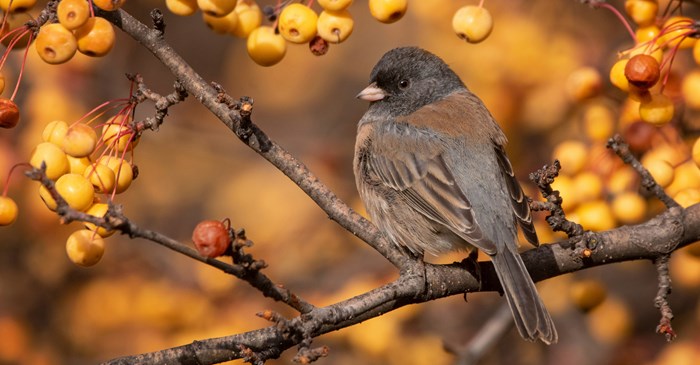Ah, the chill in the air, the richly colored leaves, and the shorter days that signal the beginning of autumn. They’re all signs that it may be time to change up the offerings in your bird feeders.
Each fall, birds are programmed to shift their diets to adapt to changes in food supplies, including a lesser insect population. And some go so far as to double their weight to prep for their upcoming migrations.
Other fun facts about birds’ autumn food diets:
They’re extra hungry. Many birds experience a heightened appetite known as hyperphagia, which helps them gain weight quickly.
Smart birds are caching food. Some gather food in autumn and store it away in the crevices of rocks, trees or the ground to be consumed later.
High-calorie foods rule. Preferred foods this time of year are those high in fat, sugar, and calories so they can build body weight and store fat for their upcoming migrations. Examples include nuts; seeds and grains from late-ripening grasses and flowers; nectar from late-blooming flowers and high-sugar fall fruits such as berries and grapes.
Filling your feeder can help. Excellent foods to offer in your feeder include plain or seeded suet; cracked corn; sunflower seeds, both hulled and unshelled; Nyjer seed; and peanuts and peanut butter. Hummingbirds and orioles often appreciate nectar as long as it can be kept from freezing. It’s a myth that feeding birds in autumn may prevent them from migrating for the season. Instead, it helps them store up energy and helps feed passing birds on their journeys.
And so can maintaining nature. You can supplement local birds’ diets by leaving your backyard foliage as intact as possible, with minimal removal of leaf litter or pruning of the plants that may still house seeds, fruits, or insects.
Lyric Wild Bird Food Delite No Waste Mix offers a blend of nutritious pre-hulled seeds that can help birds fuel up for their long migrations.
